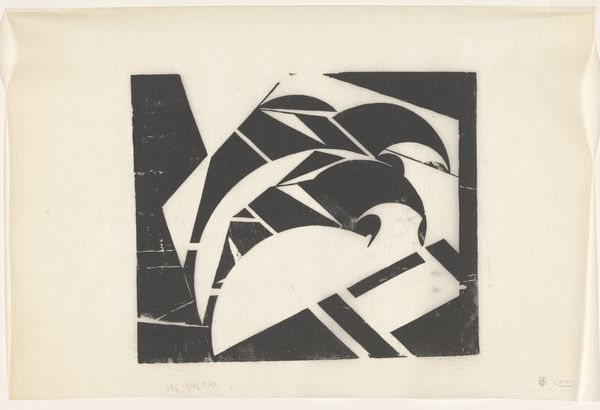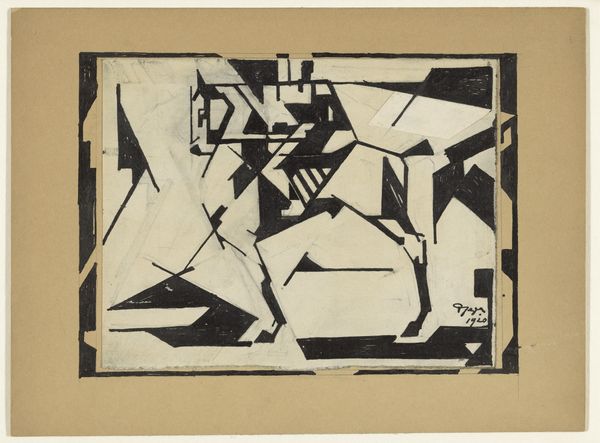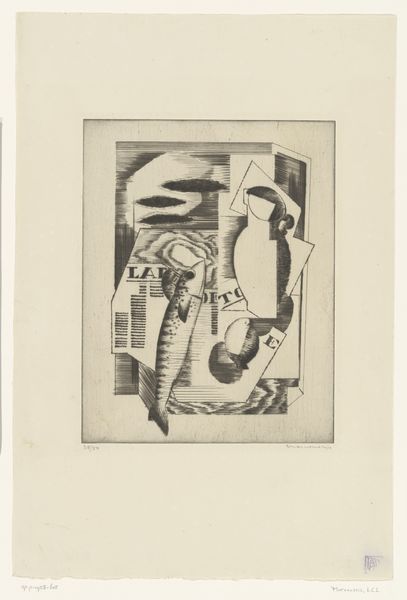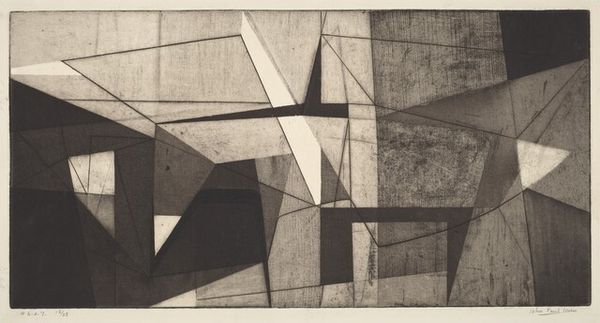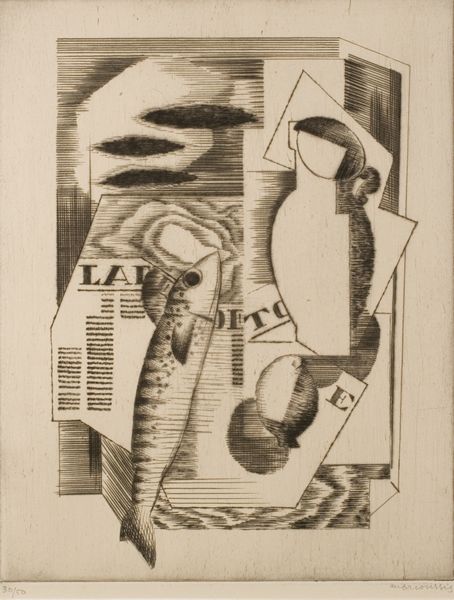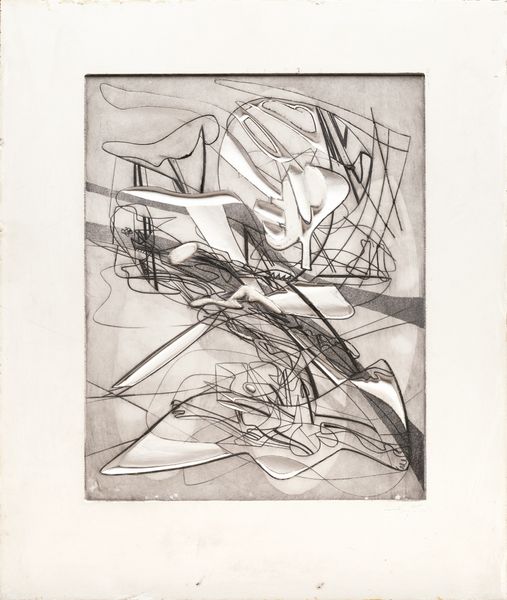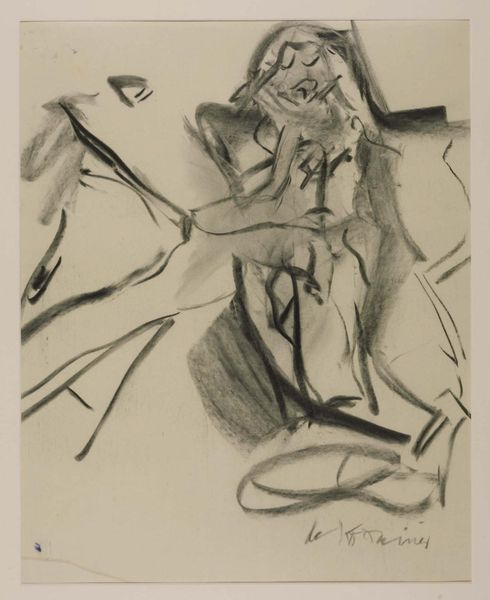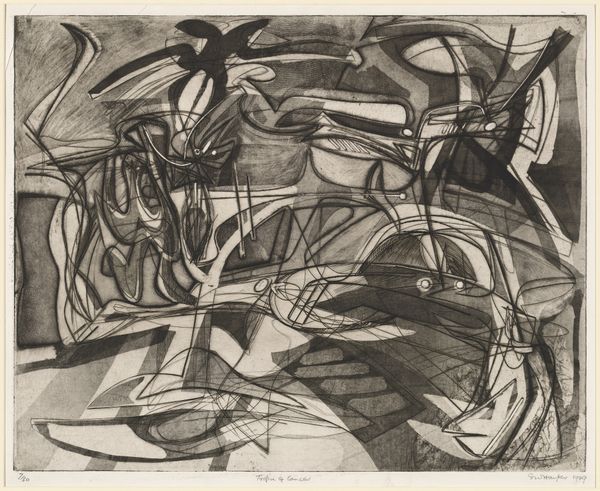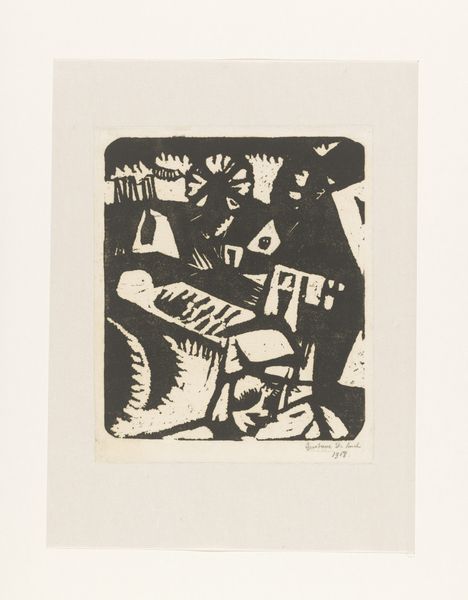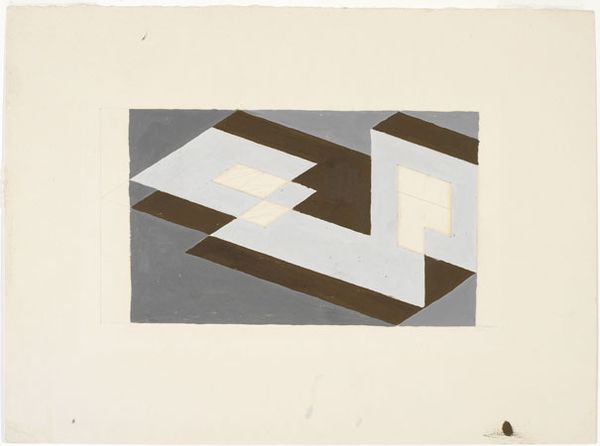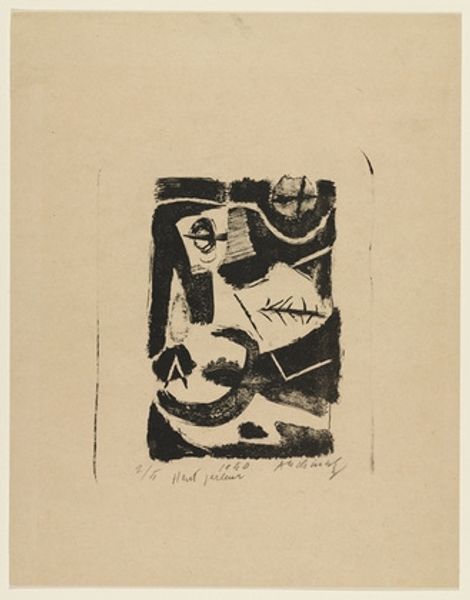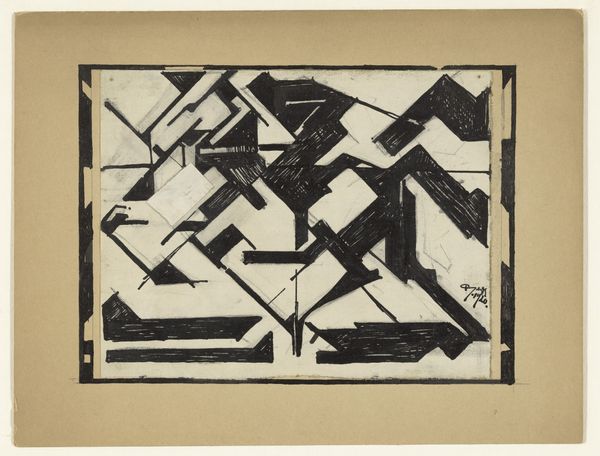
print, etching
# print
#
etching
#
figuration
#
geometric
#
horse
#
modernism
Dimensions: height 210 mm, width 249 mm
Copyright: Rijks Museum: Open Domain
Editor: Reijer Stolk’s "Man en Paard," or "Man and Horse," made around 1921. It's an etching, giving it this intense, scratchy texture. I'm really struck by how fragmented the forms are – the man and horse almost seem to be dissolving into these geometric shapes. What sort of cultural associations do you think might be in play here? Curator: Well, look at how the horse and rider are almost indistinguishable from the abstract environment around them. Stolk wasn't just depicting a man on a horse; he was engaging with the symbolic power this pairing has had throughout history. Consider the classical equestrian statue—a symbol of power and dominance. Now see how Stolk is radically breaking that down. Editor: So it's like a deconstruction of a classic image? Curator: Exactly. The fragmentation suggests a world where traditional hierarchies and established forms are questioned, perhaps even collapsing. Notice how the etching technique itself, with its rough, uneven lines, contributes to this sense of instability. The rider isn't triumphant, they're… almost battling the geometry, isn't it? What emotion do you derive from this piece? Editor: I definitely get a sense of struggle. Maybe not violent, but definitely tense. Like he's fighting against… something unseen, perhaps the societal shifts occurring during the early 20th century? Curator: Precisely. The stark, geometric forms also have roots in the visual language of Modernism; consider the simultaneous flattening and reconfiguring of space – perhaps reflective of the period’s wider cultural anxieties concerning established viewpoints. What do you make of that spear he carries? Editor: It seems less a weapon, and more a… tool, almost? A way of navigating that broken world. Curator: Yes. Stolk has taken enduring imagery and stripped away its straightforward associations. This allows for more complex and personal associations to develop for viewers even now. Editor: I never thought about how loaded an image of a man and a horse could be. Looking at it now, there is this feeling of re-examining our cultural foundations. Thanks so much.
Comments
No comments
Be the first to comment and join the conversation on the ultimate creative platform.
